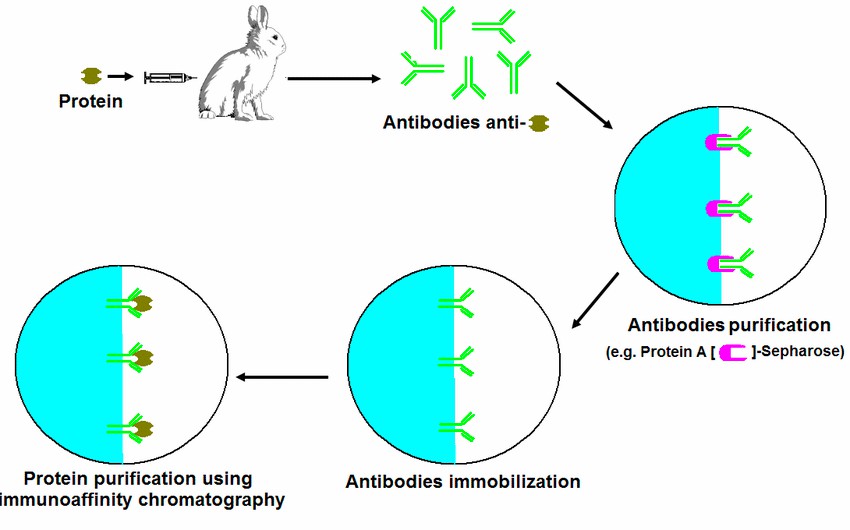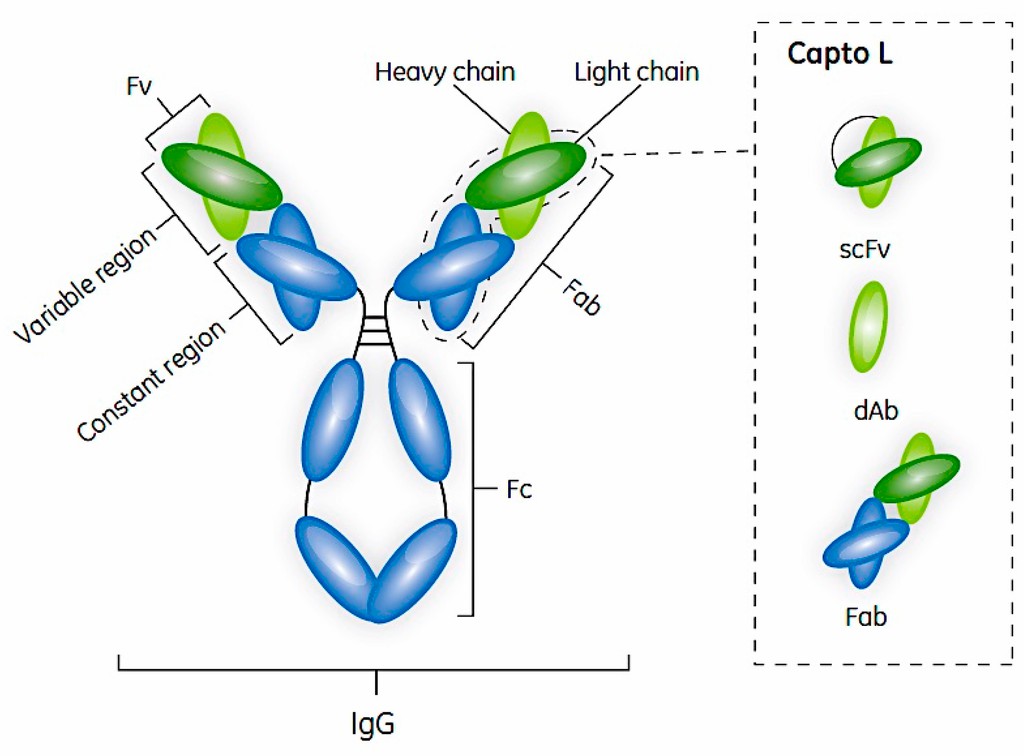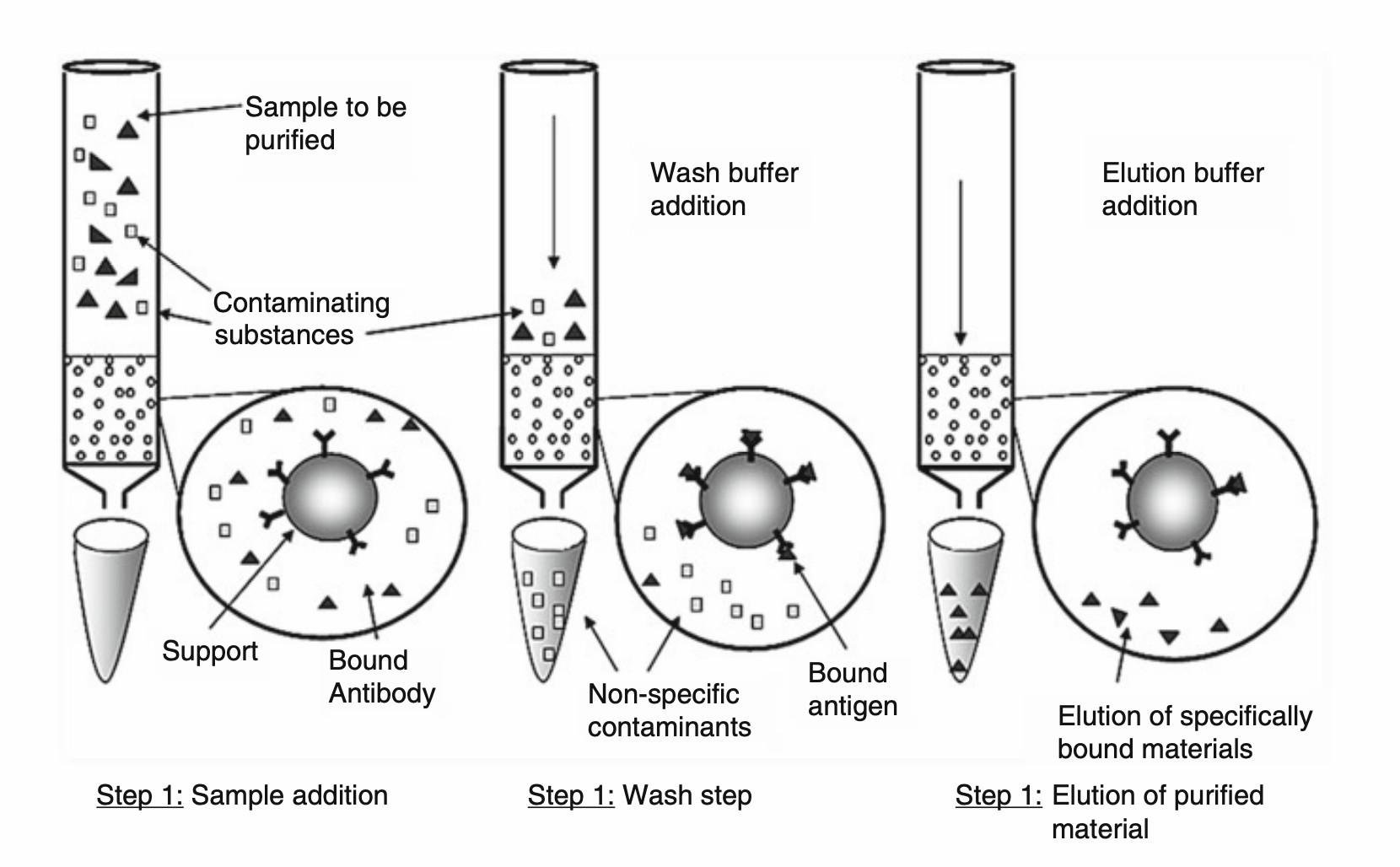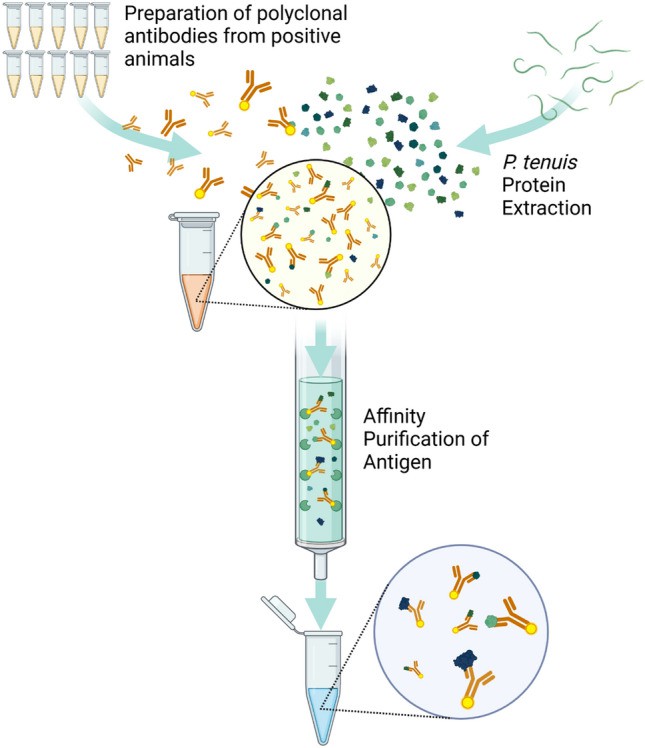B Cell-based Chromatography Assay
Introduction of Chromatography Assay
Affinity-based chromatography is a powerful and specific separation method used for bioactive compound isolation and purification employing the binding affinity between immune complexes. Specific monoclonal antibodies or patient immunoglobulin have been used to capture human or mouse tumor tissue-derived antigens, HLA-restricted tumor-specific antigens, and neoantigens. Following the capture process, the proteins bound to chromatography are eluted and evaluated by various other methods. Creative Biolabs has extensive antibody development and production experience and offers the chromatography assay for antibody-dependent cancer epitope screening and identification.
 Fig.1 Immunoaffinity chromatography for protein purification.1
Fig.1 Immunoaffinity chromatography for protein purification.1
Chromatography Assay Services at Creative Biolabs
With highly efficient chromatography technology, Creative Biolabs provides various types of chromatography assays for antigen and antibody purification and cancer epitope analysis with a particular emphasis on immunoaffinity chromatography and size exclusion chromatography (SEC).
Applications of Chromatography
-
Antibody purification
-
Antigen purification
-
Antigen-antibody complex purification
✔ Antibody Development and Purification
-
Source of Antibodies
-
Antigen immunized animals
-
Infected patients
-
Cloning and expression from cells
-
Antibodies Purification Using Chromatography
-
Protein A/G: purify IgG antibodies from the positive samples.
-
Ni-NTA: isolate recombinant antibodies with His tag.
-
Immunoaffinity Chromatography Column: use known antigen protein to perform affinity purification.
 Fig.2 Different formats of antibodies.2
Fig.2 Different formats of antibodies.2
✔ Antigen Protein Purification
Antigen protein could be purified from two pathways, immunoaffinity chromatography, and receptor-ligand-based affinity chromatography assay.
Immunoaffinity Chromatography
High-specificity monoclonal antibodies are used to purify antigens based on binding affinity.
 Fig.3 Workflow of immunoaffinity chromatography for antigen purification. (Creative Biolabs)
Fig.3 Workflow of immunoaffinity chromatography for antigen purification. (Creative Biolabs)
Support Materials
-
Low-pressure chromatography: resin or polymers like polyacrylamide and polymethacrylate.
-
High-performance liquid chromatography (HPLC): silica, azlactone beads, and more sophisticated polymer support systems.
Antibody Conjugation Methods
A variety of methods are supplied to immobilize and couple antibodies to the matrix with the right direction and site.
-
Via antibody's amine or carboxyl.
-
Via exposed free sulfhydryl group on Fab.
-
Via carbohydrate residues on the Fc region.
-
Via intermedia, such as Biotin-avidin affinity, protein A or G.
Elution Conditions
The effective elution conditions ensure antigen peptides elute from the column and keep the column easy for regeneration.
-
Optimize loading buffer by modifying pH and concentration of the solution to improve antibody binding efficiency and interaction environment.
-
Optimize elution buffer by adjusting pH, the composition of the solution, and using chaptrope agents.
 Fig.4 The principal and working steps of immunoaffinity chromatography for antigen purification.3
Fig.4 The principal and working steps of immunoaffinity chromatography for antigen purification.3
Receptor-ligand-based Affinity Chromatography
Biotinylated monoclonal antibodies are incubated with the antigen protein mixture, and the formed antigen-antibody complex is purified by an avidin column. Finally, the bound antigens are separated using a proper elution buffer.
 Fig.5 Specific antigen-antibody complex purification using chromatography.4
Fig.5 Specific antigen-antibody complex purification using chromatography.4
✔ Antigen-antibody Complex Purification
SEC, also known as gel filtration chromatography, is widely used to collect highly purified, homogeneous antigen-antibody complex from a mixture based on molecule size.
✔ Techniques and Assays for Epitope Peptide Analysis
The eluted antigen binders can be used to immunize animals to acquire antisera and then examined by multiple assays.
Amino Acid Sequencing: Liquid chromatography and mass spectrometry assay.
Purity Tests: Immunoprecipitation assay and SDS-PAGE.
Specificity Tests: Western blot, ELISA, and antibody mediated cross blocking assay.
3D Structure study: X-ray crystallization, small-angle scattering, and nuclear magnetic resonance (NMR) assay.
Highlights
-
High Specificity
-
Large-scale
-
High Efficiency
-
Cos-effective Price
Please contact us and consult the service of your interest.
References
-
Coelho, Luana Cassandra.; et al. Protein Purification by Affinity Chromatography. 2012.
-
Rodrigo, G.; et al. Antibody Fragments and Their Purification by Protein L Affinity Chromatography. Antibodies. 2015, 4, 259-277.
-
Fitzgerald, J.; et al. Immunoaffinity Chromatography: Concepts and Applications. Methods in molecular biology (Clifton, N.J.). 2017, 1485: 27–51.
-
Richards, J.; et al. Novel methods of immunogenic antigen selection for serological diagnosis of Parelaphostrongylus tenuis infection. Scientific Reports. 2023, 13.
For Research Use Only | Not For Clinical Use


 Fig.1 Immunoaffinity chromatography for protein purification.1
Fig.1 Immunoaffinity chromatography for protein purification.1
 Fig.2 Different formats of antibodies.2
Fig.2 Different formats of antibodies.2
 Fig.3 Workflow of immunoaffinity chromatography for antigen purification. (Creative Biolabs)
Fig.3 Workflow of immunoaffinity chromatography for antigen purification. (Creative Biolabs)
 Fig.4 The principal and working steps of immunoaffinity chromatography for antigen purification.3
Fig.4 The principal and working steps of immunoaffinity chromatography for antigen purification.3
 Fig.5 Specific antigen-antibody complex purification using chromatography.4
Fig.5 Specific antigen-antibody complex purification using chromatography.4
 Download our brochure
Download our brochure